-
Bomb-detecting lasers to improve security checkpoints
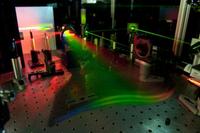
Research has put the possibility of bomb-detecting lasers at security checkpoints within reach by developing a laser that can detect micro traces of explosive chemicals on clothing and luggage. The laser not only detects the explosive material, but it also provides an image of the chemical’s exact location, even if it’s merely a minute trace on a zipper.
-
-
Researchers fabricate new camouflage coating from squid protein

What can the U.S. military learn from a common squid? A lot about how to hide from enemies, according to researchers. Researchers show that material that mimics calamari skin is invisible to infrared cameras, which is a good thing since infrared detection equipment is employed extensively by military forces for night vision, navigation, surveillance, and targeting.
-
-
“Climate Change, Water Conflicts, and Human Security” report released
Increasingly, climate change and the associated increase in the frequency of extreme weather events such as floods, droughts, and rising sea level, are acknowledged as not only having humanitarian impacts, but also creating national and regional political and security risks. While people and governments can adapt to these impacts, their capacity to do so varies.
-
-
Study links prehistoric climate shift to asteroid or comet impact
For the first time, a dramatic climate shift which has long fascinated scientists has been linked to the impact in Quebec of an asteroid or comet. The event took place about 12,900 years ago, at the beginning of the Younger Dryas period, and marks an abrupt global change to a colder, dryer climate, with far-reaching effects on both animals and humans.
-
-
Future of coal in Australia riskier than renewables
Coal-fired electricity may have little or no economic future in Australia, even if carbon capture and storage becomes commercially available, a new analysis has found. The study shows that coal with carbon capture and storage scenarios are likely to struggle to compete economically with 100 percent renewable electricity in a climate-constrained world, even if carbon capture and storage is commercialized by 2030.
-
-
Flexible vehicle-arrest system stops cars involved in crime, terrorism
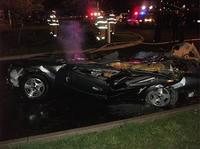
Researchers have developed a mathematical model that could help engineers design a flexible vehicle-arrest system for stopping cars involved in criminal activity or terrorism, such as suspect car bombers attempting break through a check point, without wrecking the car or killing the occupants.
-
-
New detectors for chemical, biological threats
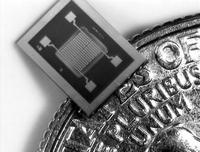
In the late 1990s, Sandia scientists developed a simple-to-use handheld chemical detector for the military, the MicroChemLab. Ever since, Sandia has improved such microfluidics- and microelectromechanical (MEMS) systems-based instruments that identify chemicals based on gas chromatography, or GC, and resonator-style instruments such as surface acoustic wave (SAW) detectors. The lab’s researchers are building on this sensor work to invent tiny detectors that can sniff out everything from explosives and biotoxins to smuggled humans.
-
-
Global warming increasing risk of record heat: scientists
Drought shriveled crops in the Midwest, massive wildfires raged in the West, and East Coast cities sweltered. The summer of 2012 was a season of epic proportions, especially July, the hottest month in the history of U.S. weather record keeping. As the world warms, it is likely that we will continue to see such calamitous weather. Scientists caution against trying to determine whether global warming caused any individual extreme event, but they say that the observed global warming clearly appears to have affected the likelihood of record heat.
-
-
High performance concrete to rescue Brittany's lighthouses

Lighthouses in Brittany, France, have stood at the intersection of violent currents, blinding storms, and breaking surf for over a century. A lighthouse turret off the coast of Lorient in Brittany has been enhanced with technology developed for bridges. This trial run will test the application of Ultra-High Performance Concrete (UHPC).
-
-
Limestone powder enhances performance of “green” concrete
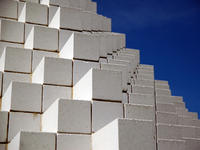
Adding limestone powder to “green” concrete mixtures — those containing substantial amounts of fly ash, a byproduct of coal-burning power plants — can significantly improve performance. The promising laboratory results suggest a path to increasing greatly the use of fly ash in concrete, leading to sizable reductions in greenhouse gas emissions, energy use, construction costs and landfill volumes.
-
-
Top Five most awesome robots
In the last decade, robots have often been employed on the battlefields of Iraq and Afghanistan, usually to seek out hidden bombs. More and more of these the robots are now being adopted by first response agencies to help in search-and-rescue operations in the wake of disasters. The growing interest in – and usefulness of — robotics have also inspired a series of competitions and challenges, some of which are directed at high-school and college students, to encourage budding scientists to go into the field of robotics.
-
-
Norwich University receives $10 million for cybersecurity research
Norwich University in Vermont has secured another round of funding for cybersecurity research. $9.9 million in federal funds will go toward a project aiming to ensure that private and public sector groups can better plan for cyberattacks. The university’s Applied Research Institute (NUARI) will direct the money for its Distributed Environment for Critical Infrastructure Decision-making Exercises (DECIDE) program.
-
-
Crop pests spread as Earth warms, threatening global food security
Currently 10-16percent of global crop production is lost to pests. Losses of major crops to fungi, and fungi-like microorganisms, amount to enough to feed nearly 9 percent of today’s global population. These figures will increase further as global temperatures continue to rise, and a new study shows that global warming is resulting in the spread of crop pests toward the North and South Poles at a rate of nearly three km a year.
-
-
Using desalination to secure water in the desert
Researchers are working on an innovative project to secure water supplies in desert communities which suffer from having an acute shortage of fresh water, but abundant hypersaline groundwater. Hypersaline water is even saltier than seawater.
-
-
Wildfires to worsen with climate change
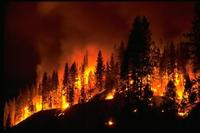
Air quality has vastly improved over much of the United States in the past forty years as a result of government efforts to regulate emissions. Gradual climate change may contribute in the coming years to increases in significant, disruptive events like severe storms, floods, and wildfires. A Harvard model predicts wildfire seasons by 2050 will be three weeks longer, up to twice as smoky, and will burn a wider area in the western United States. These increasing wildfires may erase some of the progress made on air quality.
-
More headlines
The long view
A Shining Star in a Contentious Legacy: Could Marty Makary Be the Saving Grace of a Divisive Presidency?
While much of the Trump administration has sparked controversy, the FDA’s consumer-first reforms may be remembered as its brightest legacy. From AI-driven drug reviews to bans on artificial dyes, the FDA’s agenda resonates with the public in ways few Trump-era policies have.
Risk Assessment with Machine Learning
Researchers utilize geological survey data and machine learning algorithms for accurately predicting liquefaction risk in earthquake-prone areas.
Foundation for U.S. Breakthroughs Feels Shakier to Researchers
With each dollar of its grants, the National Institutes of Health —the world’s largest funder of biomedical research —generates, on average, $2.56 worth of economic activity across all 50 states. NIH grants also support more than 400,000 U.S. jobs, and have been a central force in establishing the country’s dominance in medical research. Waves of funding cuts and grant terminations under the second Trump administration are a threat to the U.S. status as driver of scientific progress, and to the nation’s economy.
The True Cost of Abandoning Science
“We now face a choice: to remain at the vanguard of scientific inquiry through sound investment, or to cede our leadership and watch others answer the big questions that have confounded humanity for millennia —and reap the rewards.”
Bookshelf: Smartphones Shape War in Hyperconnected World
The smartphone is helping to shape the conduct and representation of contemporary war. A new book argues that as an operative device, the smartphone is now “being used as a central weapon of war.”
New Approach Detects Adversarial Attacks in Multimodal AI Systems
New vulnerabilities have emerged with the rapid advancement and adoption of multimodal foundational AI models, significantly expanding the potential for cybersecurity attacks. Topological signatures key to revealing attacks, identifying origins of threats.
